What Is Cath Kidston Clearance Sales Scam & How It Works
Cath Kidston Clearance Sales Scam Outline
There’s a tricky online scam going on that’s using social media to trick people into buying fake Cath Kidston Clearance Sale items. This scam is popping up on Facebook, Instagram, TikTok, and other platforms, where targeted ads promise unbelievable discounts of over 90% off on all kinds of products, claiming these are limited-time offers.
Here’s how the scam works: when unsuspecting shoppers click on these ads, they don’t end up on the real Cath Kidston website with a genuine clearance event. Instead, the links take them through a series of redirects to fake online stores. These fake stores are cleverly designed to look just like the real Cath Kidston site, with stolen product images, copied logos, and patterns.
Research shows that a bunch of these fake websites is connected, all based in China, and they’re specifically targeting Cath Kidston because of its popularity for British floral homewares and accessories. Controlled by some unnamed criminal group, these scam websites seem legitimate at first glance but have clear signs that they’re fake. They often provide fake business addresses, have no real company history or social media presence, and lack verifiable contact information beyond sketchy email addresses.
The real problem starts when people make purchases on these fake websites. Even though they happily take your money and collect personal information during checkout, they don’t actually send you any real products. Most people who fall for the scam end up receiving nothing at all. And if they do get something, it’s usually a cheap knockoff, or the items are not what they ordered.
This scam is clever because it targets deal-seekers on social media, where people are looking for discounts. By pretending to offer amazing deals on popular brands like Cath Kidston, these scammers can trick people into giving them money without delivering anything in return.
How the Cath Kidston Clearance Sales Scam operates
Imagine you’re scrolling through your favorite social media platform and come across an ad for a massive sale on Cath Kidston products, with discounts reaching up to 90%. Excited about the incredible deals, you click the ad and end up on what seems to be the official Cath Kidston online store. Everything looks legitimate – the logo, the products, the layout – just as you’d expect.
However, what you don’t realize is that you’ve fallen into the trap of a cunning online scam. The criminals responsible for this operation use social media ads to lure in unsuspecting shoppers. These fake online stores mimic Cath Kidston’s branding to perfection, making it hard to distinguish them from the real deal. They create a sense of urgency with taglines like “Going Out of Business Sale” to make you act quickly.
The Cath Kidston Clearance Sales Scam begins when you click on the ad and are redirected to one of these fraudulent websites. At first glance, the site appears genuine, and you excitedly start adding items to your cart. When it’s time to check out, you willingly provide personal information like your name, address, and even your payment card details, thinking you’re making a legitimate purchase.
However, this is where the trap is set. Once you complete your order, one of several disappointing outcomes awaits you. You might receive nothing at all – your money simply disappears. Alternatively, you might get low-quality knockoff products or even completely different items from what you ordered.
To make matters worse, the criminals now have all the information you provided during the purchase. This sensitive data opens the door to identity theft, allowing them to steal more money from your accounts, apply for credit in your name, or sell your information to other cybercriminals. As a victim, you could find yourself facing multiple fraudulent activities and accounts opened in your name, all stemming from that seemingly innocent online shopping spree.
In essence, these scammers not only trick you into buying fake or random products but also use your personal data to wreak havoc on your finances and identity. It’s a cautionary tale about the dangers lurking behind too-good-to-be-true online deals and the importance of being vigilant when sharing sensitive information online.
Spotting Fraudulent Cath Kidston Sites and Deceptive Sales
Even though fake Cath Kidston websites go to great lengths to look real, there are signs savvy shoppers can watch out for to avoid falling for their too-good-to-be-true clearance sales. By carefully examining website details and questioning the legitimacy of massive discounts, consumers can protect themselves from handing over money or personal information to deceptive scammers.
Start by checking the contact and company information on the website. Legitimate companies provide verified phone numbers, physical addresses, and information about their leadership teams. If a website lacks these details or seems unwilling to share basic operational information, it’s a red flag that something may be amiss. Scam websites often fail to provide genuine means of contacting company representatives.
Another crucial step is analyzing the domain details. Look at the domain name itself and its registration details using an ICANN Whois lookup tool. Fake sites may use names that sound similar to the real brand but have subtle differences. Be cautious if the domain was registered very recently, within the past 3 months, as legitimate sites usually have a longer history. Scam operators often register domains for short periods, abandoning them when their fraudulent activities are discovered.
Scrutinizing discounts is also essential. Genuine high-end companies do have sales, but be wary if deals seem too good to be true, especially if they’re exclusively advertised on social media platforms rather than the company’s official channels. Massive clearance discounts of 50% to 75% off or claims of up to 90% off can be indicators of a scam rather than a real promotion.
Additionally, assess the social media engagement of the brand. Check official social media pages to see if the website deals are posted there or referenced anywhere else besides targeted ads. Scam stores often exist solely online as fake fronts, lacking any real-world presence, while legitimate brands have strong followings across multiple channels.
By staying vigilant and recognizing warning signs like missing contact information, recent domain registrations, unbelievable discounts, and limited social media engagement, shoppers can identify sophisticated scam attempts and avoid falling victim to online retail fraud. It’s a reminder that a little caution can go a long way in protecting yourself from deceptive practices in the online shopping world.
Spotting scam Catch Kidston ads on Social Media
The sneaky group behind the fake Cath Kidston clearance sales doesn’t just stop at creating phony online stores; they use social media ads to trick bargain hunters into visiting their scam websites. These ads show up on Facebook, Instagram, and TikTok, promising incredible discounts that seem too good to be true.
On TikTok, the scammers take vintage brand videos and jazz them up with flashy text and arrows, shouting about a big clearance event. They keep switching to new accounts to keep the scam going, especially when their previous accounts get banned. The videos are designed to make you feel like you’re missing out if you don’t act fast, flashing messages like “Last Chance” and claiming huge 90% discounts.
Now, on Facebook, where they can target ads very precisely, the scammers get clever. They aim their ads at people interested in things like “clearance sales,” “limited time offers,” and, of course, “Cath Kidston discounts.” The ads stand out with super low prices, like saying the whole store is 90% off! They also use urgent messages, like “Going Out of Business Sale – Today Only!” to make you feel like you need to hurry. Instead of direct links to the real store, the links take you through a bunch of redirects, and the website addresses don’t even have the real brand name – they might look like “boutiquestoresale” instead of “cathkidston.”
Now, over on Instagram, they use a lot of generic pictures instead of the real brand’s approved images. They target posts at middle-aged women, who are usually interested in Cath Kidston. The videos they put together use clips from real brand promotions, but they add scammy text and urgent music. These scammers keep changing their account names to dodge bans, but they keep running almost the same ads.
So, the next time you see an ad offering huge discounts from Cath Kidston on social media, especially if it seems too good to be true, take a moment to double-check. It might be one of these tricky scams trying to take advantage of your excitement for a good deal. Stay sharp and be cautious online!
Things to do if fallen victim to the Cath Kidston Clearance Sales Scam:
If you have been deceived by the Cath Kidston Clearance Sales Scam, it is crucial to promptly safeguard yourself and your finances. Follow these steps to mitigate the impact of the scam and protect your assets:
- Notify the Federal Trade Commission (FTC) about the scam by visiting their website at https://reportfraud.ftc.gov/. Additionally, consider lodging a complaint with your state attorney general’s office or local consumer protection agency to ensure appropriate action is taken against the scammers.
- File a report about the scam with the Internet Crime Complaint Center (IC3) through their website at https://www.ic3.gov/. The IC3 is a collaborative effort between the FBI and the National White Collar Crime Center, dedicated to collecting and assessing complaints related to online fraud.
- Submit a report to Facebook, Instagram, or TikTok and mark the ads as misleading or deceptive.
- Reach out to your bank or credit card company without delay and inform them about the fraudulent transaction. Request the cancellation of your card and the issuance of a new one. Explore the possibility of disputing the charge to secure a potential refund.
- Immediately update your passwords and PINs for all your online accounts, particularly if you have used the same credentials on the fraudulent website. This ensures added security and minimizes the risk of unauthorized access.
- Regularly keep an eye on your credit reports and bank statements to detect any signs of suspicious transactions or unauthorized charges.
- If you have concerns about malware infecting your device, conduct a scan using the SpyHunter 5 Anti-Malware software for potential threats.
Threat Summary |
| Name: Cath Kidston Clearance Sales Scam |
| Category: Scam |
| Features: Aims to deceive users into providing their personal and sensitive information like credit card details, address, phone number, and social security number. |
| Danger Level: Medium |
| Damage: Victims may have severe consequences, such as identity theft, fraud, and other malicious activities. |
|
Symptoms: The unwanted application can cause several adverse effects, such as displaying intrusive pop-up ads and slowing down internet browsing. The threat can manipulate the settings of an internet browser. This manipulation forces users to visit the hijacker’s website and conduct internet searches using their search engine. |
|
Distribution: Browser hijackers or adware such as Cath Kidston Clearance Sales Scam can spread through deceptive pop-up ads, free software installers that are bundled with malware, and fake Flash Player installers. |
|
Removal: To remove the threat, scan your system with powerful SpyHunter anti-malware software |
What is the purpose of Cath Kidston Clearance Sales Scam?

The purpose of adware or browser hijacker is to generate revenue through targeted advertising. It collects user data, such as browsing habits and preferences, to deliver personalized ads. By bombarding users with ads, the unwanted program aims to increase the chances of users clicking on them, leading to potential revenue for its developers.
While adware is primarily an annoyance and can compromise user privacy, it is often a means for companies to monetize free software and services without directly charging users. The primary objective of a browser hijacker is to promote certain websites, generate traffic, and potentially earn revenue through advertising or other means by exploiting the user’s browsing experience without their consent.
How does PUP end up on users’ devices?
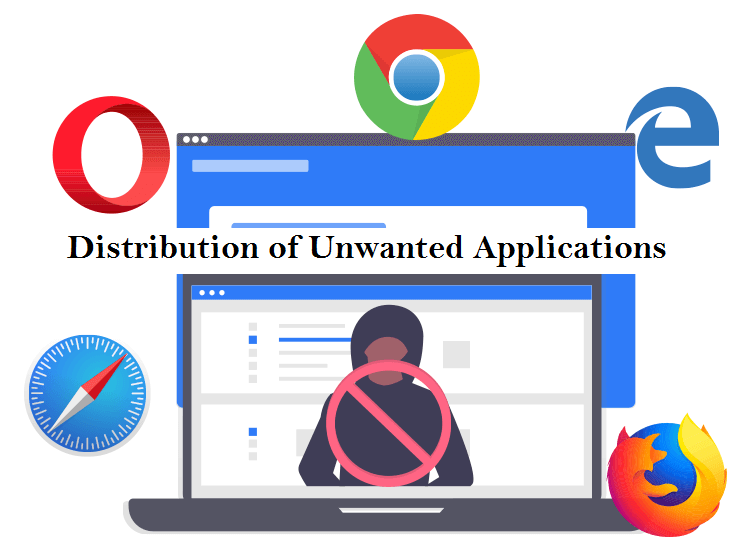
Devices can fall victim to browser hijackers or adware through the download of infected files, malevolent email attachments, or visits to compromised websites. These hijacking tools may be bundled within browser extensions or included as part of software packages. Additionally, browser based threats can stem from shareware, freeware, or spyware infections, further expanding their potential sources of origin.
Potentially unwanted programs like Cath Kidston Clearance Sales Scam often find their way onto users’ devices unintentionally, as users can be deceived into unknowingly downloading them. This can occur when users agree to an extra download mentioned in the terms and conditions of software installation. Another tactic involves misleading users with a choice to decline the installation of the browser hijacker software, but the wording deliberately confuses them, resulting in the inadvertent download. Once installed, PUP initiates its malicious actions by manipulating the user’s browser activities through embedded malevolent code.
What are the impacts of Cath Kidston Clearance Sales Scam infection?
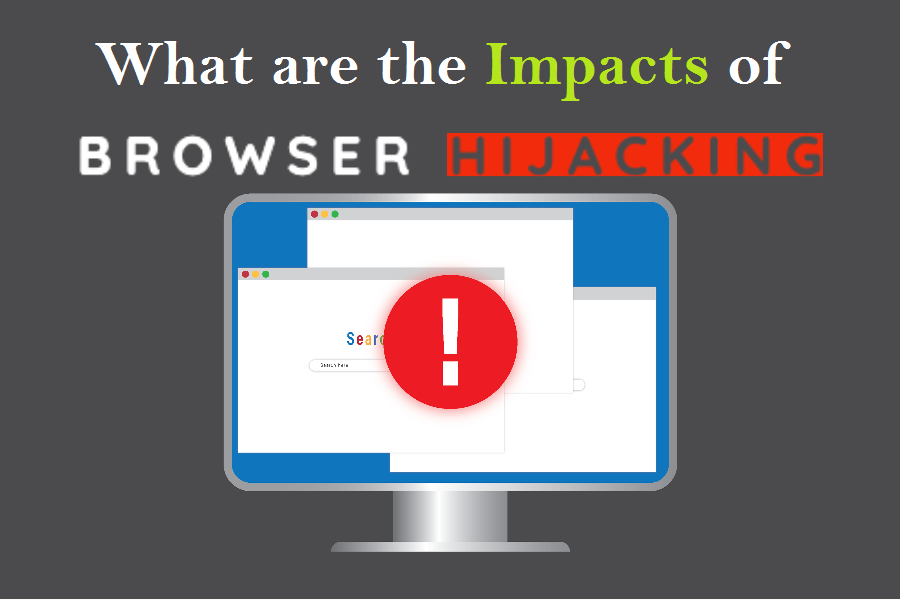
Browser hijacking refers to the unauthorized modification of web browser’s settings or behavior by malicious software or websites. It can have various impacts on users and their browsing experience. Here are some common impacts of browser hijacking:
- Altered homepage and search engine: Hijackers often change the default homepage and search engine settings of a browser to redirect users to a different website. This can disrupt the user’s browsing routine and make it challenging to find the desired information.
- Unwanted browser extensions: Browser hijackers or adware may install malicious or unwanted browser extensions without the user’s consent. These extensions can inject ads, track browsing activities, or collect personal information, compromising primacy and security.
- Increased exposure to ads: Hijacked browsers often display an excessive number of pop-up ads, banners ads, or in-text ads. This flood of advertisements not only annoys users but can also slow down browsing speed and consume bandwidth.
- Tracking and data collection: Browser-based infections like Cath Kidston Clearance Sales Scam employ tracking mechanisms to monitor users’ online activities, including websites visited, search queries, and personal information entered on web forms. This information can be used for targeted advertising or sold to third-parties without the user’s consent.
What problems Cath Kidston Clearance Sales Scam can cause?
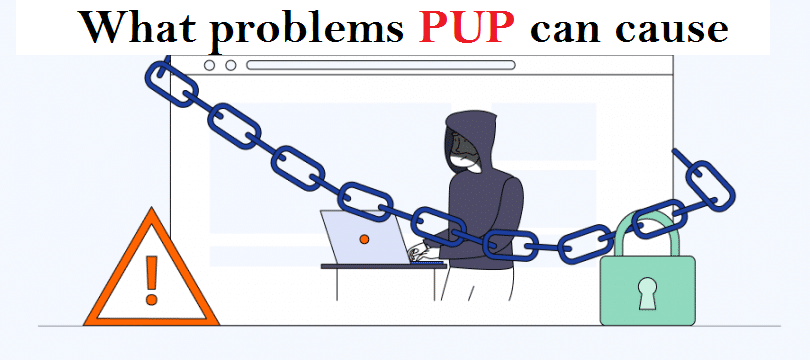
This undesirable application can cause instability in web browsers by modifying critical settings, introducing incompatible software, or consuming system resources. Users may experience frequent crashes, slow performance, or unresponsiveness while browsing. In more severe cases, browsing hijacking can lead to unauthorized access to online accounts. PUPs may attempt to steal login credentials, financial information, or other sensitive data, putting users at risk of identity theft or fraud.
Furthermore, browser hijacking can be a part of a larger malware infection. In such cases, adware or hijacker may serve as a gateway for other malicious software, such as ransomware, keyloggers, or spyware, further compromising the user’s system and data. Also, browser-based threats with data collection abilities can cause severe problems. They can gather sensitive information such as login credentials, financial data, and personal details, leading to identity theft and fraud. The collected data may also be sold to third parties, compromising user privacy. Additionally, targeted advertising based on the collected information can result in a flood of intrusive and potentially malicious ads.
How can I know if I have an adware or browser hijacker?
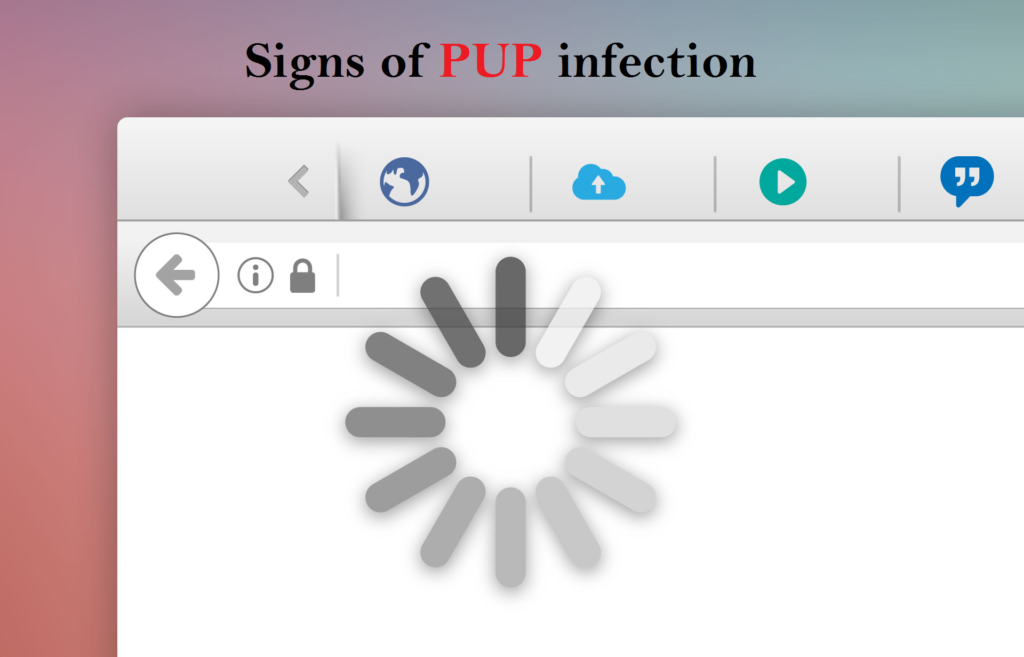
If you have an adware or browser hijacker, such as Cath Kidston Clearance Sales Scam installed on your device, you may notice a few clear indications. Users need to exercise caution if they encounter any of the following signs, as it could suggest their system is compromised.
- If users find that their default homepage or preferred search engine has been substituted without their authorization, they should be on high alert.
- If users notice that their search queries are being rerouted to unfamiliar websites, it’s important for them to be cautious and aware of this redirection behavior.
- When users are bombarded with an excessive number of intrusive pop-up ads appearing frequently, they should be cautious and wary of the abundance of unsolicited advertisements.
- If users experience delays in the loading of webpages, where the content takes an unusually long time to appear, it is important for them to remain vigilant and take note of this sluggish performance.
- Should users notice the sudden appearance of unauthorized toolbars on their internet browser, it is crucial for them to exercise caution and be mindful of these unapproved additions.
Special Offer (For Windows)
Cath Kidston Clearance Sales Scam can be creepy computer infection that may regain its presence again and again as it keeps its files hidden on computers. To accomplish a hassle free removal of this malware, we suggest you take a try with a powerful Spyhunter antimalware scanner to check if the program can help you getting rid of this virus.
Do make sure to read SpyHunter’s EULA and Privacy Policy. Spyhunter free scanner downloaded just scans and detect present threats from computers and can remove them as well once, however it requires you to wait for next 48 hours. If you intend to remove detected threats instantly, then you will have to buy its licenses version that will activate the software fully.
Special Offer (For Macintosh) If you are a Mac user and Cath Kidston Clearance Sales Scam has affected it, then you can download free antimalware scanner for Mac here to check if the program works for you.
Antimalware Details And User Guide
Click Here For Windows Click Here For Mac
Important Note: This malware asks you to enable the web browser notifications. So, before you go the manual removal process, execute these steps.
Google Chrome (PC)
- Go to right upper corner of the screen and click on three dots to open the Menu button
- Select “Settings”. Scroll the mouse downward to choose “Advanced” option
- Go to “Privacy and Security” section by scrolling downward and then select “Content settings” and then “Notification” option
- Find each suspicious URLs and click on three dots on the right side and choose “Block” or “Remove” option

Google Chrome (Android)
- Go to right upper corner of the screen and click on three dots to open the menu button and then click on “Settings”
- Scroll down further to click on “site settings” and then press on “notifications” option
- In the newly opened window, choose each suspicious URLs one by one
- In the permission section, select “notification” and “Off” the toggle button

Mozilla Firefox
- On the right corner of the screen, you will notice three dots which is the “Menu” button
- Select “Options” and choose “Privacy and Security” in the toolbar present in the left side of the screen
- Slowly scroll down and go to “Permission” section then choose “Settings” option next to “Notifications”
- In the newly opened window, select all the suspicious URLs. Click on the drop-down menu and select “Block”

Internet Explorer
- In the Internet Explorer window, select the Gear button present on the right corner
- Choose “Internet Options”
- Select “Privacy” tab and then “Settings” under the “Pop-up Blocker” section
- Select all the suspicious URLs one by one and click on the “Remove” option

Microsoft Edge
- Open the Microsoft Edge and click on the three dots on the right corner of the screen to open the menu
- Scroll down and select “Settings”
- Scroll down further to choose “view advanced settings”
- In the “Website Permission” option, click on “Manage” option
- Click on switch under every suspicious URL

Safari (Mac):
- On the upper right side corner, click on “Safari” and then select “Preferences”
- Go to “website” tab and then choose “Notification” section on the left pane
- Search for the suspicious URLs and choose “Deny” option for each one of them

Manual Steps to Remove Cath Kidston Clearance Sales Scam:
Remove the related items of Cath Kidston Clearance Sales Scam using Control-Panel
Windows 7 Users
Click “Start” (the windows logo at the bottom left corner of the desktop screen), select “Control Panel”. Locate the “Programs” and then followed by clicking on “Uninstall Program”

Windows XP Users
Click “Start” and then choose “Settings” and then click “Control Panel”. Search and click on “Add or Remove Program’ option

Windows 10 and 8 Users:
Go to the lower left corner of the screen and right-click. In the “Quick Access” menu, choose “Control Panel”. In the newly opened window, choose “Program and Features”

Mac OSX Users
Click on “Finder” option. Choose “Application” in the newly opened screen. In the “Application” folder, drag the app to “Trash”. Right click on the Trash icon and then click on “Empty Trash”.

In the uninstall programs window, search for the PUAs. Choose all the unwanted and suspicious entries and click on “Uninstall” or “Remove”.

After you uninstall all the potentially unwanted program causing Cath Kidston Clearance Sales Scam issues, scan your computer with an anti-malware tool for any remaining PUPs and PUAs or possible malware infection. To scan the PC, use the recommended the anti-malware tool.
Special Offer (For Windows)
Cath Kidston Clearance Sales Scam can be creepy computer infection that may regain its presence again and again as it keeps its files hidden on computers. To accomplish a hassle free removal of this malware, we suggest you take a try with a powerful Spyhunter antimalware scanner to check if the program can help you getting rid of this virus.
Do make sure to read SpyHunter’s EULA and Privacy Policy. Spyhunter free scanner downloaded just scans and detect present threats from computers and can remove them as well once, however it requires you to wait for next 48 hours. If you intend to remove detected threats instantly, then you will have to buy its licenses version that will activate the software fully.
Special Offer (For Macintosh) If you are a Mac user and Cath Kidston Clearance Sales Scam has affected it, then you can download free antimalware scanner for Mac here to check if the program works for you.
How to Remove Adware (Cath Kidston Clearance Sales Scam) from Internet Browsers
Delete malicious add-ons and extensions from IE
Click on the gear icon at the top right corner of Internet Explorer. Select “Manage Add-ons”. Search for any recently installed plug-ins or add-ons and click on “Remove”.

Additional Option
If you still face issues related to Cath Kidston Clearance Sales Scam removal, you can reset the Internet Explorer to its default setting.
Windows XP users: Press on “Start” and click “Run”. In the newly opened window, type “inetcpl.cpl” and click on the “Advanced” tab and then press on “Reset”.

Windows Vista and Windows 7 Users: Press the Windows logo, type inetcpl.cpl in the start search box and press enter. In the newly opened window, click on the “Advanced Tab” followed by “Reset” button.

For Windows 8 Users: Open IE and click on the “gear” icon. Choose “Internet Options”

Select the “Advanced” tab in the newly opened window

Press on “Reset” option

You have to press on the “Reset” button again to confirm that you really want to reset the IE

Remove Doubtful and Harmful Extension from Google Chrome
Go to menu of Google Chrome by pressing on three vertical dots and select on “More tools” and then “Extensions”. You can search for all the recently installed add-ons and remove all of them.

Optional Method
If the problems related to Cath Kidston Clearance Sales Scam still persists or you face any issue in removing, then it is advised that your reset the Google Chrome browse settings. Go to three dotted points at the top right corner and choose “Settings”. Scroll down bottom and click on “Advanced”.

At the bottom, notice the “Reset” option and click on it.

In the next opened window, confirm that you want to reset the Google Chrome settings by click on the “Reset” button.

Remove Cath Kidston Clearance Sales Scam plugins (including all other doubtful plug-ins) from Firefox Mozilla
Open the Firefox menu and select “Add-ons”. Click “Extensions”. Select all the recently installed browser plug-ins.

Optional Method
If you face problems in Cath Kidston Clearance Sales Scam removal then you have the option to rese the settings of Mozilla Firefox.
Open the browser (Mozilla Firefox) and click on the “menu” and then click on “Help”.

Choose “Troubleshooting Information”

In the newly opened pop-up window, click “Refresh Firefox” button

The next step is to confirm that really want to reset the Mozilla Firefox settings to its default by clicking on “Refresh Firefox” button.
Remove Malicious Extension from Safari
Open the Safari and go to its “Menu” and select “Preferences”.

Click on the “Extension” and select all the recently installed “Extensions” and then click on “Uninstall”.

Optional Method
Open the “Safari” and go menu. In the drop-down menu, choose “Clear History and Website Data”.

In the newly opened window, select “All History” and then press on “Clear History” option.

Delete Cath Kidston Clearance Sales Scam (malicious add-ons) from Microsoft Edge
Open Microsoft Edge and go to three horizontal dot icons at the top right corner of the browser. Select all the recently installed extensions and right click on the mouse to “uninstall”

Optional Method
Open the browser (Microsoft Edge) and select “Settings”

Next steps is to click on “Choose what to clear” button

Click on “show more” and then select everything and then press on “Clear” button.

How to prevent Cath Kidston Clearance Sales Scam infection?
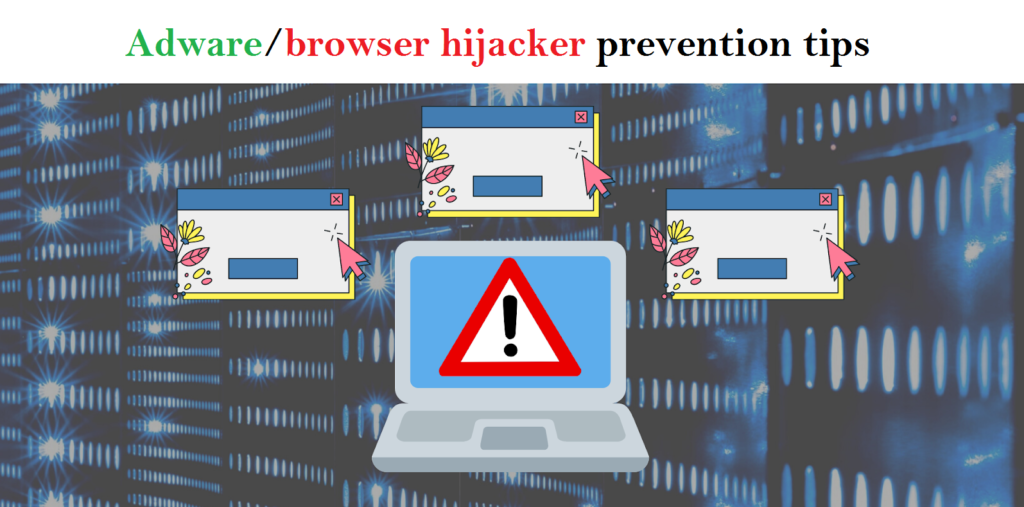
There are multiple measures to safeguard against browser hijacking or adware infection:
- Be cautious when downloading software. Browser-based parasite, such as Cath Kidston Clearance Sales Scam often disguises itself as legitimate software, so carefully read all terms, conditions, and end user licensing agreements before downloading any programs.
- Avoid running freeware programs that may unpack software during installation. Prior to installing any software, review the download settings to ensure no unwanted software is included.
- Exercise caution when encountering suspicious links. Refrain from clicking on email links, messages, or pop-up boxes from unfamiliar senders, as they may trigger the download of browser hijackers or adware.
- Keep your operating system (OS) and browser up to date. Regularly applying OS and browser patches is vital to prevent hijacking attacks, as attackers often exploit known vulnerabilities. Updating software closes these potential entry points.
- Utilize antivirus software. Install reliable antivirus software and keep it updated with the latest patches. It offers protection against browser hijacking, notifying users in real-time if downloaded software attempts to modify browser settings. Certain antivirus software empowers users to block such alterations.
By following these steps, you can minimize the risk of potentially unwanted program intrusion and keep your PC system safe and secure.
Conclusion:
To sum up, Cath Kidston Clearance Sales Scam can cause significant problems for computer users, including unwanted browser redirects, changes to homepage and search engine settings, and even the installation of additional malware. These infections typically result from downloading and installing software from untrusted sources or clicking on suspicious links. To prevent browser hijackers or adware, it is important to be cautious when downloading and installing software, use reputable antivirus tool, and keep browsers and operating systems updated with the latest security patches.
Related FAQs about Cath Kidston Clearance Sales Scam
What are the Symptoms of Browser-hijacker (Cath Kidston Clearance Sales Scam)?
The common symptoms of Cath Kidston Clearance Sales Scam infection include changes to the default homepage and search engine, unwanted toolbars and extensions, pop-up ads, and redirects to unfamiliar websites. Additionally, the browser may slow down or crash frequently, and search results may be manipulated or irrelevant to the query.
What Should I do if my PC gets infected with virus like Cath Kidston Clearance Sales Scam?
If your computer is infected with this browser-based threat, you should immediately run a virus scan using reputable antivirus software. If the software detects the malware, you should follow the removal instructions provided by it to eliminate the infection and restore your browser settings to default.
How can I protect my password and other personal credentials from Cath Kidston Clearance Sales Scam?
To protect your password and other sensitive information from Cath Kidston Clearance Sales Scam, you should employ reputable antivirus suite, enable two-factor authentication on all accounts, and use strong and unique passwords for each account. Also, you should avoid clicking on suspicious links or downloading software from untrusted sources.
Why I should trust your research conducted on Cath Kidston Clearance Sales Scam?
It’s important to mention that our research is conducted independently and with the assistance of unbiased security experts, who provide us with daily updates on the latest definitions and threats related to malware, adware, and browser hijackers. Moreover, our study on the Cath Kidston Clearance Sales Scam threat is supported by VirusTotal.
Special Offer (For Windows)
Cath Kidston Clearance Sales Scam can be creepy computer infection that may regain its presence again and again as it keeps its files hidden on computers. To accomplish a hassle free removal of this malware, we suggest you take a try with a powerful Spyhunter antimalware scanner to check if the program can help you getting rid of this virus.
Do make sure to read SpyHunter’s EULA and Privacy Policy. Spyhunter free scanner downloaded just scans and detect present threats from computers and can remove them as well once, however it requires you to wait for next 48 hours. If you intend to remove detected threats instantly, then you will have to buy its licenses version that will activate the software fully.
Special Offer (For Macintosh) If you are a Mac user and Cath Kidston Clearance Sales Scam has affected it, then you can download free antimalware scanner for Mac here to check if the program works for you.





